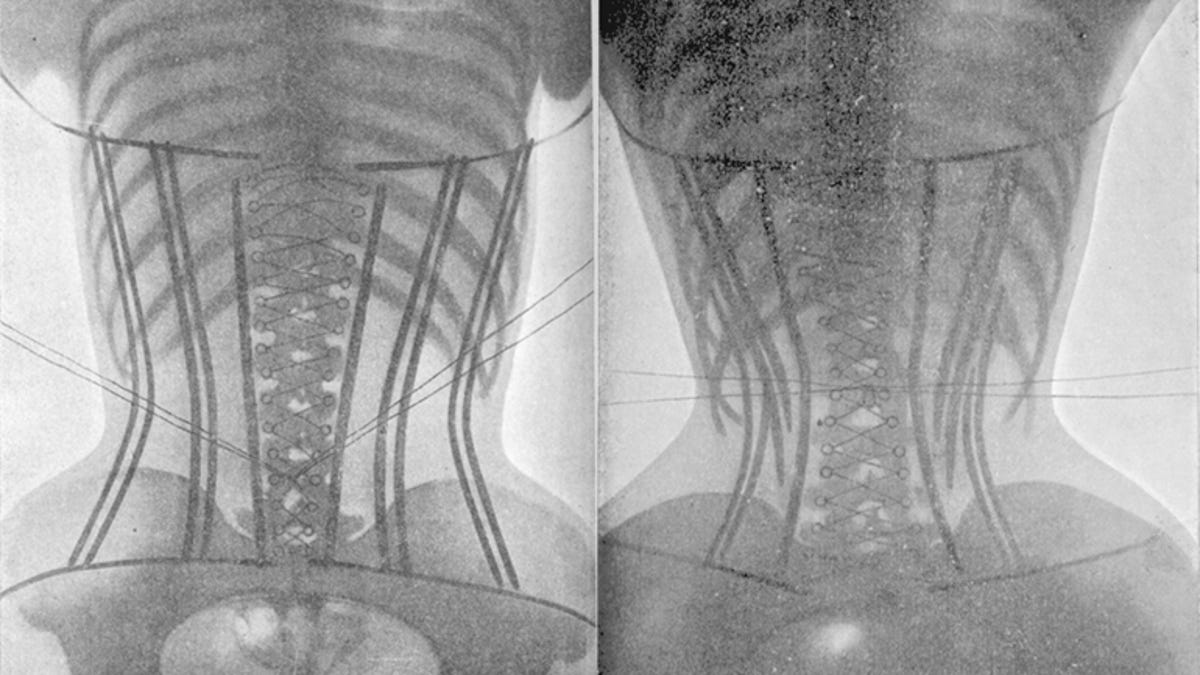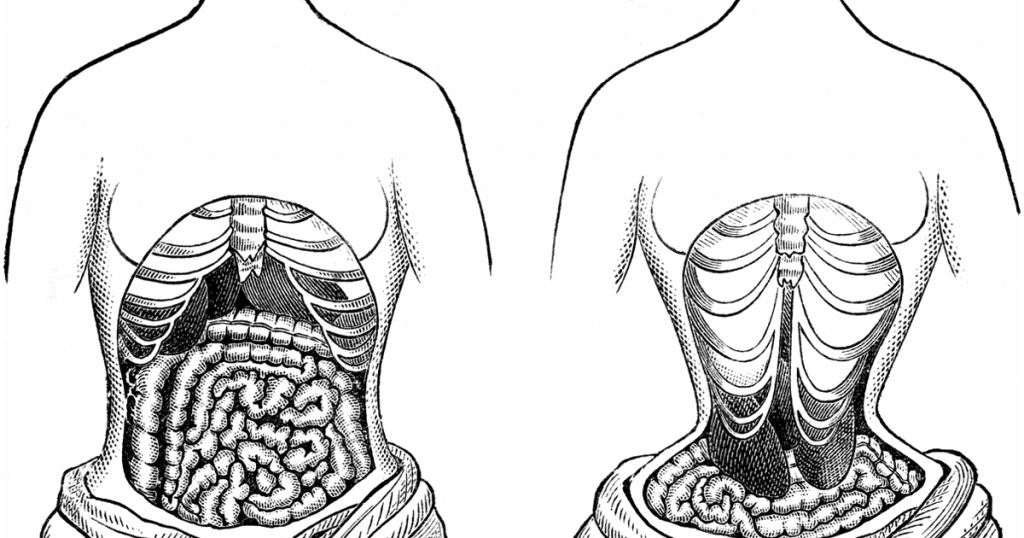
Your esophagus stomach and intestines form an intricate network in your abdomen and extreme compression from a corset. Corsets did however cause the shape of your organs to shift and that is sort of terrifying.

Nevertheless the restriction of the organs – which could cause poor digestion poor breathing and poor function otherwise while wearing a tightly laced corset – was a cause for concern for some.
What do corsets do to your organs. What corsets do to your organs. Taz says waist trainers makes heart burn and indigestion worse and women pass out after wearing them because they cant get enough air. Your diaphragm colon liver stomach and small intestines can all be shifted around inside your body after wearing one for too long.
Do corsets actually move your organs. Corsets even when worn regularly do not cause any shifting of the internal organs more drastic than what normally occurs during pregnancy. The interior space of the female biological body is designed to move and shift in order to accommodate the presence of a growing baby.
It involves using the negative pressure in your lungs to push your intestines up into your ribcage. So which organs move when you corset. Basically the organs that can be moved are those in the peritoneal cavity.
Stomach much of the intestine the liver and the spleen. Im glad that corsets have seemed to help improve your digestion I have heard this from a few other corset wearers as well. If they had problems with bowel movements in the past it seems to have gotten easier for them with a corset.
Like the legend of the Loch Ness Monster the infamous Sasquatch or the Abominable Snowman there is a pervasive myth that waist training with steel boned corsets will somehow crush your internal organs. Television doctors have even given creed to this strange theory so it must be true. Compressing the abdominal organs could cause poor digestion and over time the back muscles could atrophy.
In fact long term tight lacing led to the rib cage becoming deformed. The Hunterian Museum has an example of a rib cage showing damage caused by tight lacing. Corsets cause permanent rearranging of the internal organs causing them to function more slowly or break down entirely.
This primarily arose from a number of highly inaccurate illustrations drawn by anti-corset doctors during the height of the fad and before the rise of medical imagining technology. Nevertheless the restriction of the organs – which could cause poor digestion poor breathing and poor function otherwise while wearing a tightly laced corset – was a cause for concern for some. In one La Grecque Corset as an Aid to the Physician and Surgeon printed circa 1911 the van Orden Corset Company advertises corsets that pull in the abdomen while reducing strain on abdominal muscles.
Its true that a corset does apply pressure to your torso and may shift your internal organs somewhat. Your viscera are basically floating in a sac of fluid and are easily moved about. The danger lies in compressing them to the point where digestion is.
Enter waist training. Wearing a corset-like contraption yes like the ones from the 1500s to cinch your core hips and back. Internal organs.
B when deformed by tight lacing of a corset. In this way the liver and the stomach have been forced downward as seen in the cut. Public domain image via wikimedia commons.
Wearing corsets too often for too long can cause permanent damage some surgeons say. Binding yourself in a corset for weeks on end also restricts your lymphatic system which relies on deep breathing and normal range of motion to properly remove waste products and toxins from your body. You can cripple your digestive system.
Your esophagus stomach and intestines form an intricate network in your abdomen and extreme compression from a corset. Waist trainers can do harm to your internal organs. Through wearing a waist trainer also known as a waist cincher that is uncomfortably tighter than it should be specifically a steel-boned corset over a prolonged period of time your organs can actually move permanently and result in permanent internal damage.
However the most common sufferers from gallstones are female even today and it is unlikely that the corset had much to do with the condition. Wearing a corset for a very extended period of time can result in muscle atrophy and lower-back pain. The pectoral muscles also become weak after extensive tightlacing.
In the world of celebrity fashion its 1860 all over again. Corsets are back this time under the guise of waist training In case youre not keeping up with the Kardashians waist training consists of donning a corset to make the waist look slender and in theory train the anatomy to conform to a coveted hourglass shape. Corsets did however cause the shape of your organs to shift and that is sort of terrifying.
Ludovic OFollowell used X-Rays to show where women who did not wear corsets organs. Your lower back naturally has a curve to it and your corset can straighten it just a touch too much when you are laying down. Many of the customers featured on this page spent hours sleeping in their corsets to help achieve their waist training results.
A corset will restrict your waist causing your organs to shift. This does place added pressure on your organs similar to the pressure a womans body goes through during pregnancy. The female body is designed to take the added pressure and organ movement but if you plan on undertaking extreme tight lacing you should do so under your doctor.
Where Do Your Organs Go. If playback doesnt begin shortly try restarting your device. Videos you watch may be added to the TVs watch history and influence TV recommendations.
The corset shifts and compresses the internal organs. The abdominal compression will often lead you to eat less. Depending upon the cut of the corset and the constriction of the rib cage you may experience respiratory discomfort.
It corrects your posture but does not require effort from your back or abdominal muscles in the process leading.